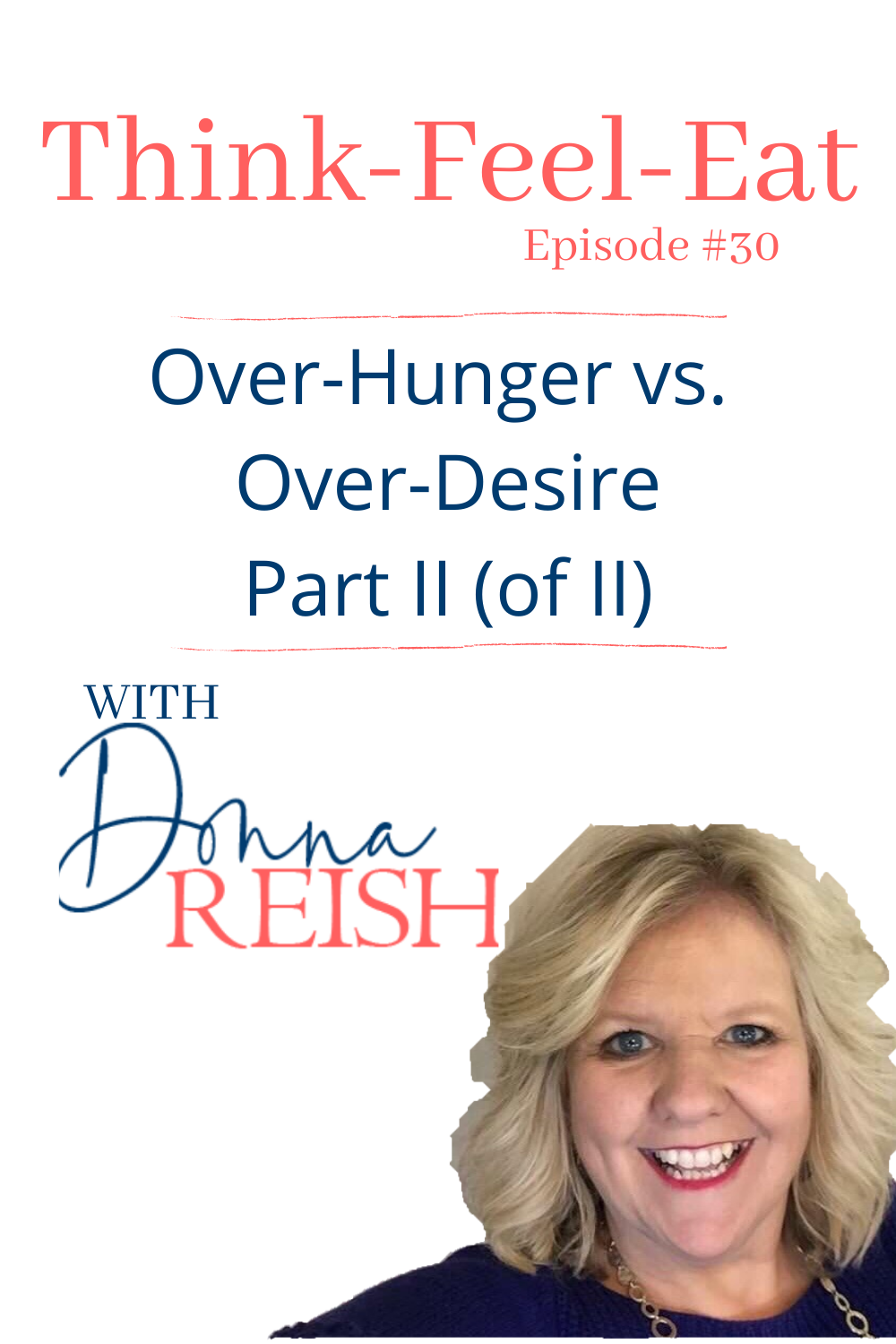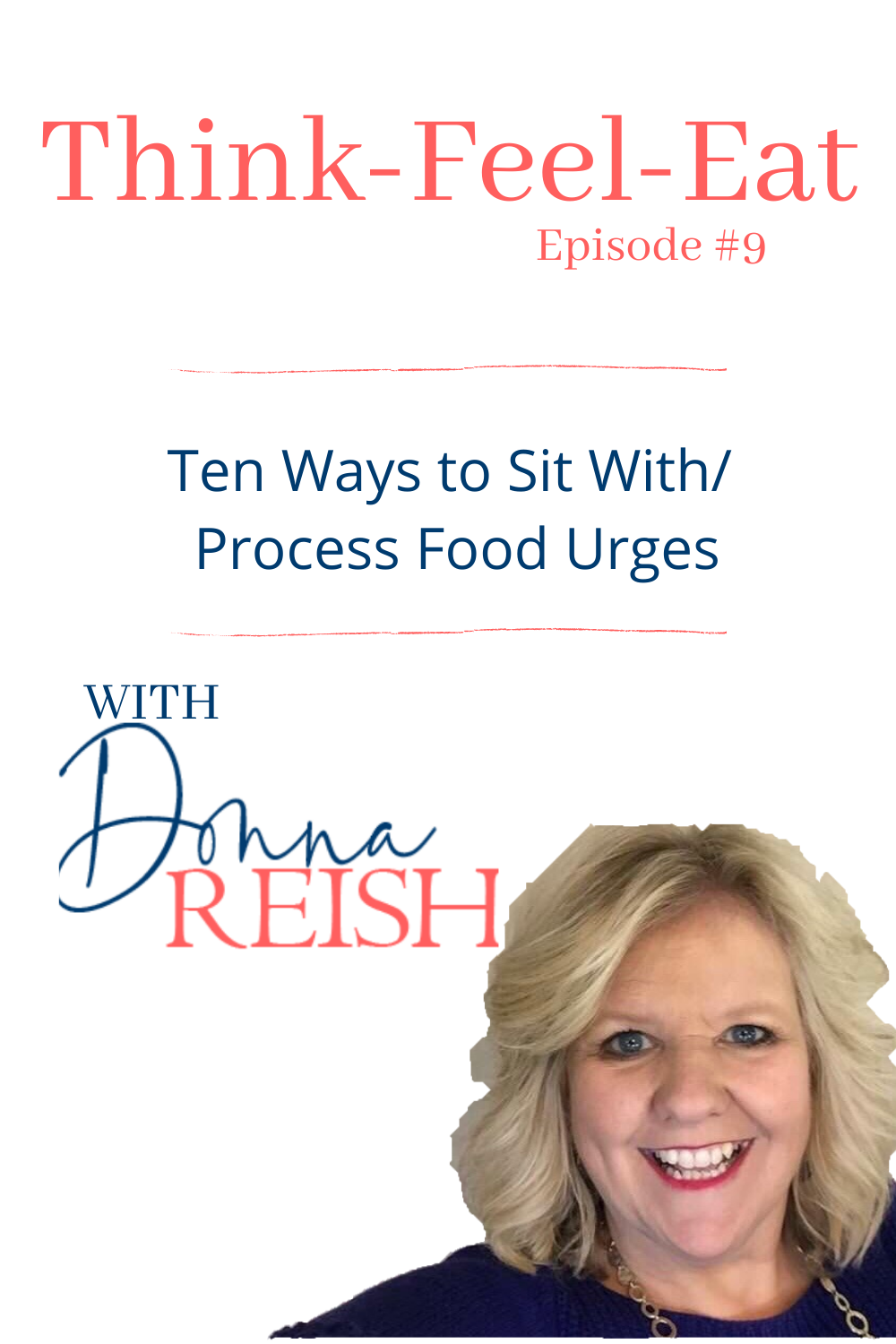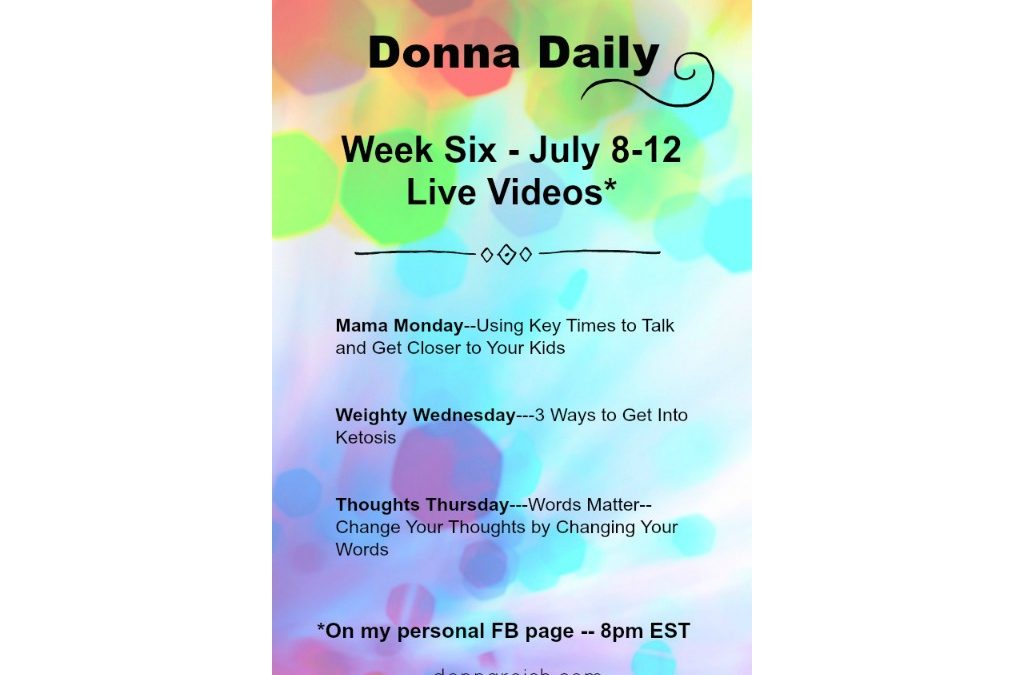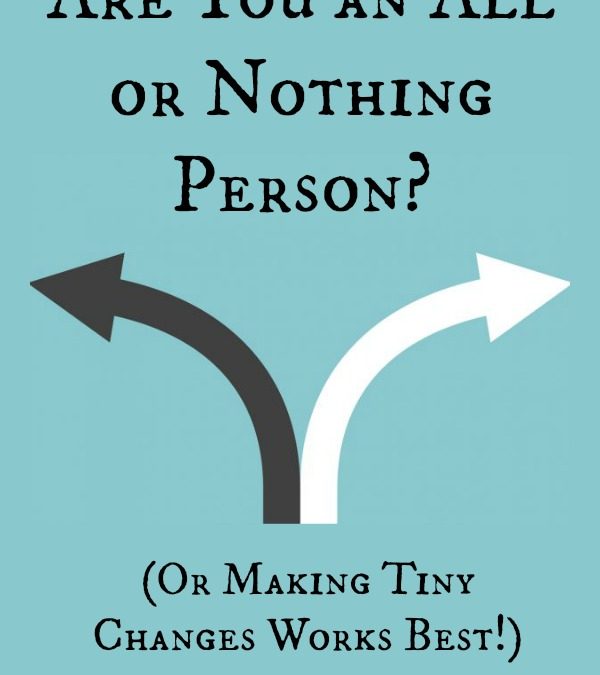
Think-Feel-Eat Episode #30: Over-Hunger vs. Over-Desire Part II (of II)
Hi! I’m Donna Reish, IF teacher, weight loss coach, blogger, and half of “The Minus 220 Pound Pair” as my husband and I have lost over 220 pounds together (160 of that in the past couple of years through the Weight Loss Lifestyle habits and strategies I teach!).
In this episode, I present Part II (of II) of Over-Hunger vs. Over-Desire with an emphasis this week on Over-Desire then looking at solutions for BOTH.
I’m so excited to bring you more OVER info! I dig in this week with a review of the two OVERS—starting with Over-Hunger (true stomach hunger, ghrelin, regulating hunger during the fast, affects satiation or “satedness” (fullness).
Then I review Over-Desire (desiring a certain food or food type oftentimes without hunger, desiring certain foods even when we are full, created by giving in to cravings frequently, also influenced by food memories).
Next. I move into dopamine spikes (See also TFE 7, 8, and 9 for teaching, charts, and Urge Map!). I teach dopamine as a motivation/habit chemical and use a helpful chart to teach dopamine from OVER behaviors and foods vs. dopamine release from simple pleasures. Of course, I help you see how to change your dopamine spikes from high calorie, seductive foods too!
Lastly, I bring Over-Hunger and Over-Desire together, showing the behaviors and tricks that can actually influence both at the same time! (More self-improvement bang for your effort-buck!) These include the 3 F’s, intermittent fasting, sleep, higher protein, reducing highly-palatable foods, and watching for vanishing calorie density foods.
Find all of my episodes, outlines, and articles for my two weekly broadcasts:
(1) Weight Loss Lifestyle broadcast (formerly Donna’s Intermittent Fasting Broadcast)
Sign up for my free webinar: https://intermittentfastingwebinar.com
Think Feel Eat 30: Over-Hunger vs. Over-Desire (Part II of II)
A. Over-Hunger vs. Over-Desire Review
1. Over-hunger is when we have true stomach hunger—the “growling ghrelin gremlins” are telling us our food is low. (See later.)
a. At end of our fast
b. When we eat a small amount when we open our eating window and then have hunger soon after.
c. When we haven’t regulated hunger during the fast yet.
d. When we haven’t figured out our best fasting time and we can’t sleep at night because of hunger.
2. Over-desire is when we desire food, often without hunger and usually certain types of food.
a. Has nothing to do with hunger.
b. Can eat these desired foods even if we are full.
c. Usually created by giving in to cravings so frequently or by not controlling seductive foods.
d. Not as affected by fasting as hunger is.
3. Each one affects a different part
a. Over-hunger is affected by satiation—when we are not sated or satiated (i.e. full), we can have more hunger
b. Over-desire is affected by satisfaction—when we are not satisfied with our food choices, we have more desire for certain foods
4. Similarities
a. They both cause the same final outcome: over-eating resulting in weight gain.
b. They can both be controlled quite a bit through strategic actions. (See The Perfect Storm of Weight Loss!)
B. Over-Desire
1. General “tricks”
a. While some tricks work for both over-hunger and over-desire, over-desire is based on food tastes, memories, hyper-palatability, dopamine spikes, etc.—not stomach space.
b. Over-hunger tricks like filling stomach with 3 F’s, drinking water, fasting so you don’t have to contend with hunger very long each day, etc., do not affect over-desire so much.
c. You know it’s over-desire and not over-hunger when it is food or food-type specific—just filling your stomach with anything won’t work.
2. Dopamine spikes
a. Craving teaching explains a lot (TFE 7, TFE 8, and TFE 9—charts and free Urge Map included!!)
b. Associated with hyper-palatable, seductive foods
1. Different foods and food types for different people (six main ones—sugar, flour, fat, salt, protein, meaty flavors like soy/bone broth, etc.)
2. Can also be textures
3. Can also be memories
3. Understand how dopamine works (dopamine spike chart)
a. Not a reward as much as a motivation/habit
b. Can happen before you ever take the first bite—just the thought of that food, that memory, that result, that situation—this is what makes it motivating/habitual
c. Hyper-addictive foods and activities release high amounts of dopamine
d. Lower, simple pleasures release low amounts of dopamine
e. Nutrition from food releases dopamine in the stomach—but later than the spikes from the brain that are more intense
f. Simple pleasures equal simple rewards
4. Tips to change your dopamine spikes from high calorie, seductive foods
a. Spread out the instances of them
b. Reduce the number of seductive elements in your treats—animal crackers instead of Oreos; sugar free frozen yogurt instead of full fat, sugary ice cream, simple nacho at home instead of loaded from restaurant—these will save calories but they will also decrease the dopamine spikes since fewer of the six elements will be combined
c. Watch for yours!!! Dove milk chocolate, sugared cereal in milk, homemade baked goods, cream filled donuts, pastries….I know mine!
d. Plan your simple pleasures! (Delights of the Day)—research shows that looking forward to something can bring the same or nearly the same reward as the action itself; you will have that simple pleasure to turn to.
C. Things That Affect Over-Hunger AND Over-Desire
1. 3 F’s—fluffy, fibrous, fluidy
a. Fill up stomach for hunger
b. Usually real, less dopamine spiking
2. Fasting
a. Only have hunger 5-8 hours a day
b. Lowers insulin/hear leptin better so fewer cravings
3. Sleep
a. Lowers hunger
b. Keeps cravings lower/you don’t have so many inhibitions/giving in to hyper-palatable foods
4. Eating higher protein (.8 to 1 gram per pound of body weight)
a. Stays in stomach/most satiating macros
b. Pushes out other foods when you try to get the right amount of protein
c. Real food for both hunger and cravings/over-desire
5. Vanishing Calorie Density
a. Food scientists create foods to melt in your mouth and essentially signal the brain that you’re not eating as much as you really are
b. These food disappear in your mouth and you often feel like you didn’t eat anything at all
c. Takes soooo much of these foods to satiate/sate you; takes more and more to get the reward from the food
d. Evaluate which foods are vanishing calorie density foods for you
D. Next Steps
1. Intermittent Fasting Course—first Monday of each month; use code SAVE20 to get $20 off—see you in September!
3. Perfect Storm of Weight Loss
























